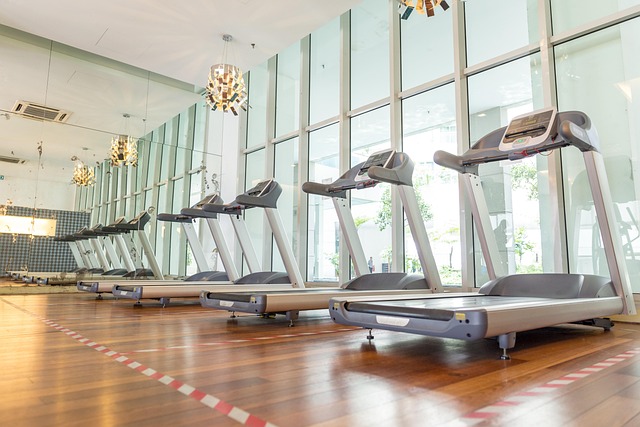Joint health is a critical aspect of overall well-being, yet it often takes a backseat until pain or stiffness begins to interfere with daily life. As we age, both men and women face increased risks of joint-related issues such as osteoarthritis, rheumatoid arthritis, and general wear-and-tear. However, biological differences, hormonal changes, and lifestyle factors mean that men and women must approach joint health in tailored ways to maintain mobility, reduce discomfort, and prevent long-term damage. Below, we’ll explore the unique challenges faced by each gender and provide actionable strategies for managing joint health effectively.
Why Joint Health Matters
Joints are the body’s connectors, enabling movement and supporting weight. Over time, cartilage—the protective tissue that cushions joints—naturally deteriorates, leading to inflammation, pain, and reduced flexibility. Poor joint health can significantly impact quality of life, limiting physical activity and increasing the risk of falls and injuries. By proactively caring for your joints, you can preserve independence, enhance athletic performance (if applicable), and enjoy an active lifestyle well into your later years.
Gender Differences in Joint Health
For Women:
Women are disproportionately affected by joint problems, particularly osteoarthritis and rheumatoid arthritis. Several factors contribute to this disparity:
- Hormonal Changes: Estrogen plays a protective role in maintaining bone and joint health. After menopause, the sharp decline in estrogen levels increases the risk of joint degeneration and inflammation.
- Anatomy: Women tend to have wider hips than men, which can alter alignment and place additional stress on the knees and ankles.
- Lifestyle Factors: Women are more likely to experience muscle weakness due to lower rates of strength training compared to men, leaving their joints less supported.
For Men:
While men may be less prone to certain joint conditions like osteoarthritis, they face other challenges:
- Higher Risk of Injury: Men are more likely to engage in high-impact sports or physically demanding jobs, increasing the likelihood of acute joint injuries that can lead to chronic issues.
- Delayed Medical Attention: Societal norms around masculinity sometimes discourage men from seeking early treatment for joint pain, allowing conditions to worsen over time.
- Muscle Mass Decline: Like women, men lose muscle mass with age, but they often start with greater baseline strength, which can mask underlying joint vulnerabilities.
Strategies for Managing Joint Health
Regardless of gender, there are universal principles for preserving joint health. However, specific adjustments based on individual needs can amplify results. Here’s how men and women can take charge of their joint health:
1. Prioritize Nutrition for Joint Support
A nutrient-rich diet is foundational for maintaining strong, flexible joints. Certain foods and supplements can help reduce inflammation and promote cartilage repair.
For Women:
- Calcium and Vitamin D: These nutrients are essential for preventing osteoporosis, which can exacerbate joint problems. Sources include dairy products, fortified cereals, and sunlight exposure.
- Omega-3 Fatty Acids: Found in fatty fish (like salmon) and flaxseeds, omega-3s combat inflammation and support joint lubrication.
- Collagen Supplements: Collagen peptides may improve skin elasticity and joint function, particularly beneficial for postmenopausal women.
For Men:
- Protein Intake: Adequate protein supports muscle growth and joint stability. Lean meats, eggs, beans, and legumes are excellent options.
- Antioxidants: Foods rich in antioxidants, such as berries, nuts, and green tea, protect against oxidative stress that accelerates joint aging.
- Turmeric and Ginger: Spices with anti-inflammatory properties can be incorporated into meals or taken as supplements to alleviate joint discomfort.
2. Incorporate Low-Impact Exercise
Staying active is one of the best ways to preserve joint health, but choosing the right type of exercise is crucial.
For Women:
- Strength Training: Building muscle around joints provides better support and reduces strain. Start with light weights or resistance bands and gradually increase intensity.
- Yoga and Pilates: These practices improve flexibility, balance, and core strength while being gentle on the joints.
- Swimming: The buoyancy of water minimizes joint pressure, making swimming an ideal low-impact workout.
For Men:
- Cycling: Cycling strengthens leg muscles without putting excessive stress on the knees and hips.
- Walking: A simple yet effective way to maintain joint mobility and cardiovascular health.
- Cross-Training: Alternate between different activities (e.g., running, swimming, and weightlifting) to avoid overusing specific joints.
3. Maintain a Healthy Weight
Excess body weight places undue stress on weight-bearing joints like the knees, hips, and ankles. Losing even a small amount of weight can significantly relieve joint pressure and reduce pain.
For Women:
- Focus on portion control and mindful eating to manage weight, especially during perimenopause when metabolism slows down.
- Engage in regular physical activity to counteract hormonal shifts that may contribute to weight gain.
For Men:
- Monitor alcohol consumption and processed food intake, as these can contribute to weight gain and systemic inflammation.
- Incorporate interval training or HIIT workouts for efficient calorie burning.
4. Address Hormonal Influences
Hormones play a pivotal role in joint health, and addressing imbalances can mitigate risks.
For Women:
- Discuss hormone replacement therapy (HRT) with a healthcare provider if experiencing severe menopausal symptoms that affect joint health.
- Consider phytoestrogens (plant-based estrogens) found in soy products and flaxseeds as natural alternatives.
For Men:
- Testosterone therapy may benefit men with clinically low levels, improving muscle mass and reducing joint pain. (productivity).

Leave a Reply